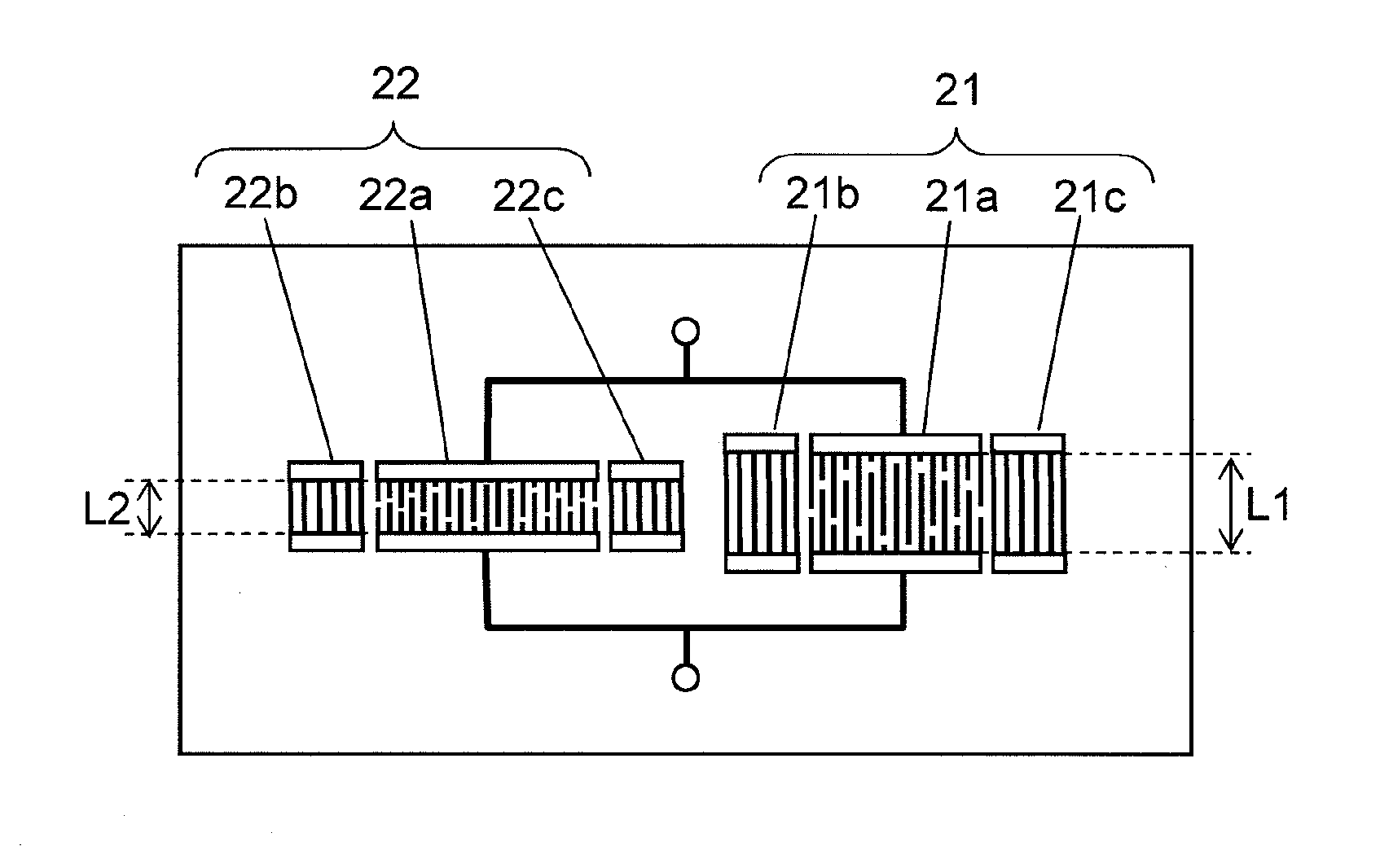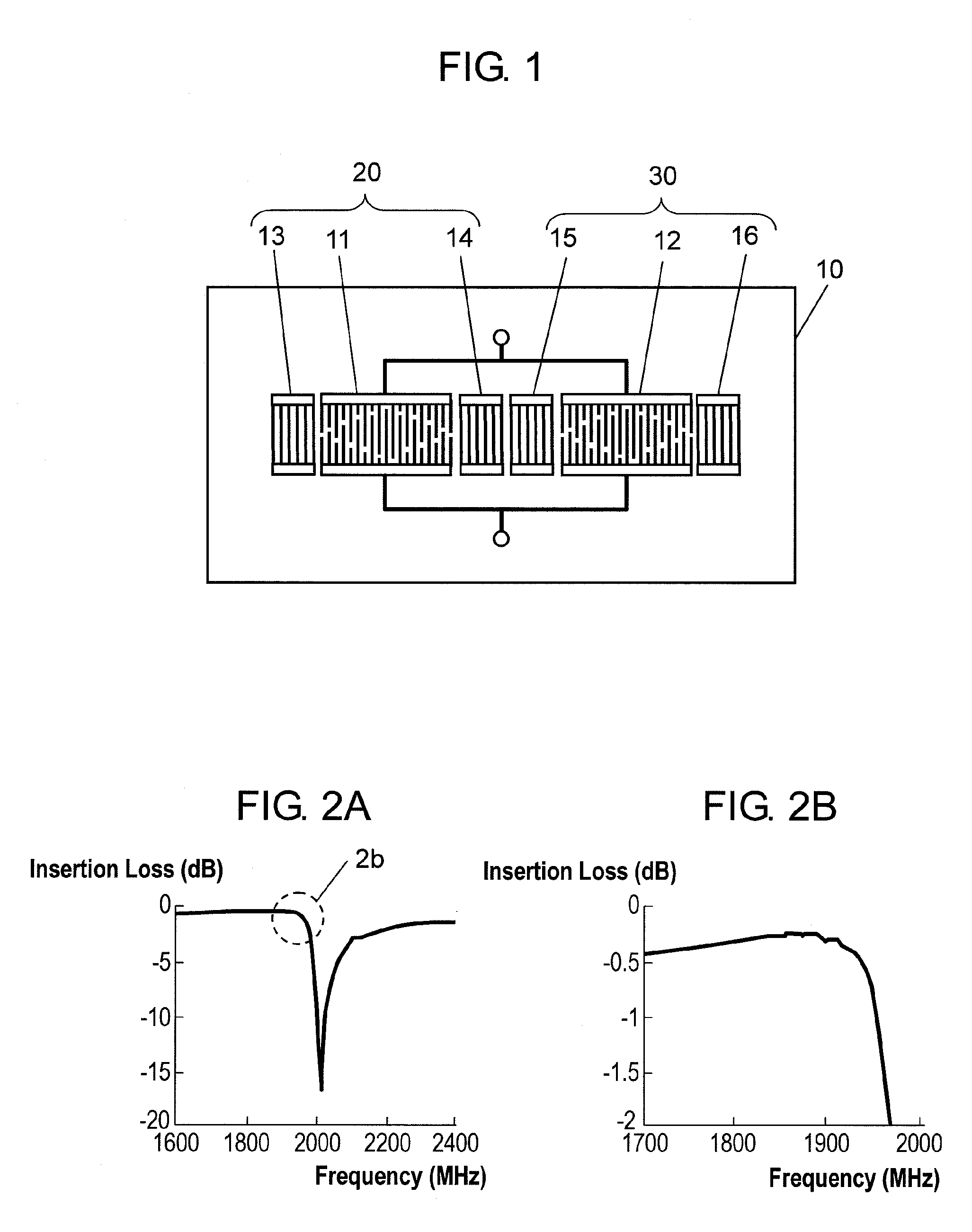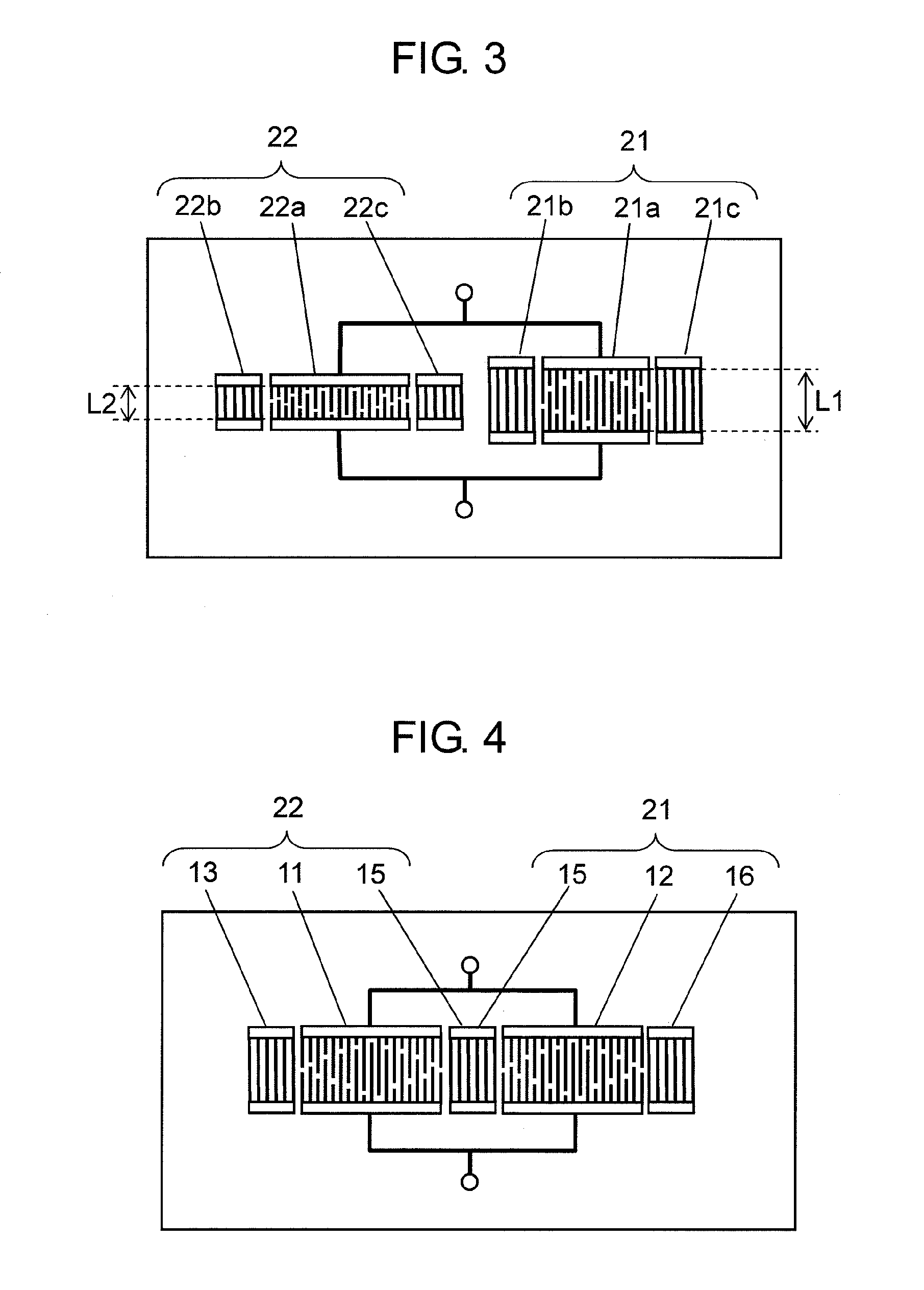Surface acoustic wave resonator having comb electrodes with different overlapping lengths
a surface acoustic wave and comb electrode technology, applied in piezoelectric/electrostrictive/magnetostrictive devices, piezoelectric/electrostriction/magnetostriction machines, electrical apparatus, etc., can solve the problems of ineffective suppression of spurious responses, and inability to suppress spurious responses attributed to resonances. , to achieve the effect of suppressing undesired resonance, preventing spur
- Summary
- Abstract
- Description
- Claims
- Application Information
AI Technical Summary
Benefits of technology
Problems solved by technology
Method used
Image
Examples
first exemplary embodiment
[0045]FIG. 1 shows a plan view of a surface acoustic wave resonator according to the first exemplary embodiment of the present invention.
[0046]As shown in FIG. 1, the surface acoustic wave resonator of the first exemplary embodiment includes piezoelectric substrate 10, first surface acoustic wave resonator 20 having comb electrodes 11 provided on piezoelectric substrate 10, and second surface acoustic wave resonator 30 having comb electrodes 12 provided on piezoelectric substrate 10. First surface acoustic wave resonator 20 and second surface acoustic wave resonator 30 have an apodized configuration as shown in FIG. 1, and they are connected in parallel.
[0047]In other words, the surface acoustic wave resonator shown in the first exemplary embodiment is comprised of comb electrodes 11 and 12, and reflectors 13, 14, 15 and 16, all formed on piezoelectric substrate 10 made of a material such as LiNbO3. Reflectors 13 and 14 are disposed in close proximity to both sides of comb electrode...
second exemplary embodiment
[0058]FIG. 4 shows a plan view of a surface acoustic wave resonator according to the second exemplary embodiment of the present invention.
[0059]The surface acoustic wave resonator of this invention has a structure, in which either reflector 14 or reflector 15 between comb electrodes 11 and 12 shown in FIG. 1 is eliminated, so that the remaining element designated as reflector 15 is used to serve commonly for both comb electrodes 11 and 12. In other words, first surface acoustic wave resonator 21 and second surface acoustic wave resonator 22 share a function of reflector 15 provided between them. This structure allows further reduction in size of the surface acoustic wave resonator as compared to the one shown in FIG. 1 of the first exemplary embodiment.
[0060]FIG. 5A shows a pass-band characteristic of this surface acoustic wave resonator, and FIG. 5B shows a part of the pass-band characteristic, wherein domain 5b encircled by a dotted line in FIG. 5A is enlarged.
[0061]As is apparent...
third exemplary embodiment
[0062]FIG. 6 shows a plan view of a surface acoustic wave resonator according to the third exemplary embodiment of the present invention.
[0063]The surface acoustic wave resonator of this invention has a structure, in which both reflectors 14 and 15 located between comb electrodes 11 and 12 shown in FIG. 1 are eliminated, and comb electrodes 11 and 12 are disposed close to each other. In other words, first surface acoustic wave resonator 21 and second surface acoustic wave resonator 22 share functions of reflectors 13 and 16 that sandwich comb electrodes 11 and 12 between them. This structure allows even further reduction in size of the surface acoustic wave resonator as compared to those discussed in the first and the second exemplary embodiments.
[0064]FIG. 7A shows a pass-band characteristic of this surface acoustic wave resonator, and FIG. 7B shows a part of the pass-band characteristic, wherein domain 7b encircled by a dotted line in FIG. 7A is enlarged.
[0065]As is apparent from ...
PUM
 Login to View More
Login to View More Abstract
Description
Claims
Application Information
 Login to View More
Login to View More - R&D
- Intellectual Property
- Life Sciences
- Materials
- Tech Scout
- Unparalleled Data Quality
- Higher Quality Content
- 60% Fewer Hallucinations
Browse by: Latest US Patents, China's latest patents, Technical Efficacy Thesaurus, Application Domain, Technology Topic, Popular Technical Reports.
© 2025 PatSnap. All rights reserved.Legal|Privacy policy|Modern Slavery Act Transparency Statement|Sitemap|About US| Contact US: help@patsnap.com



